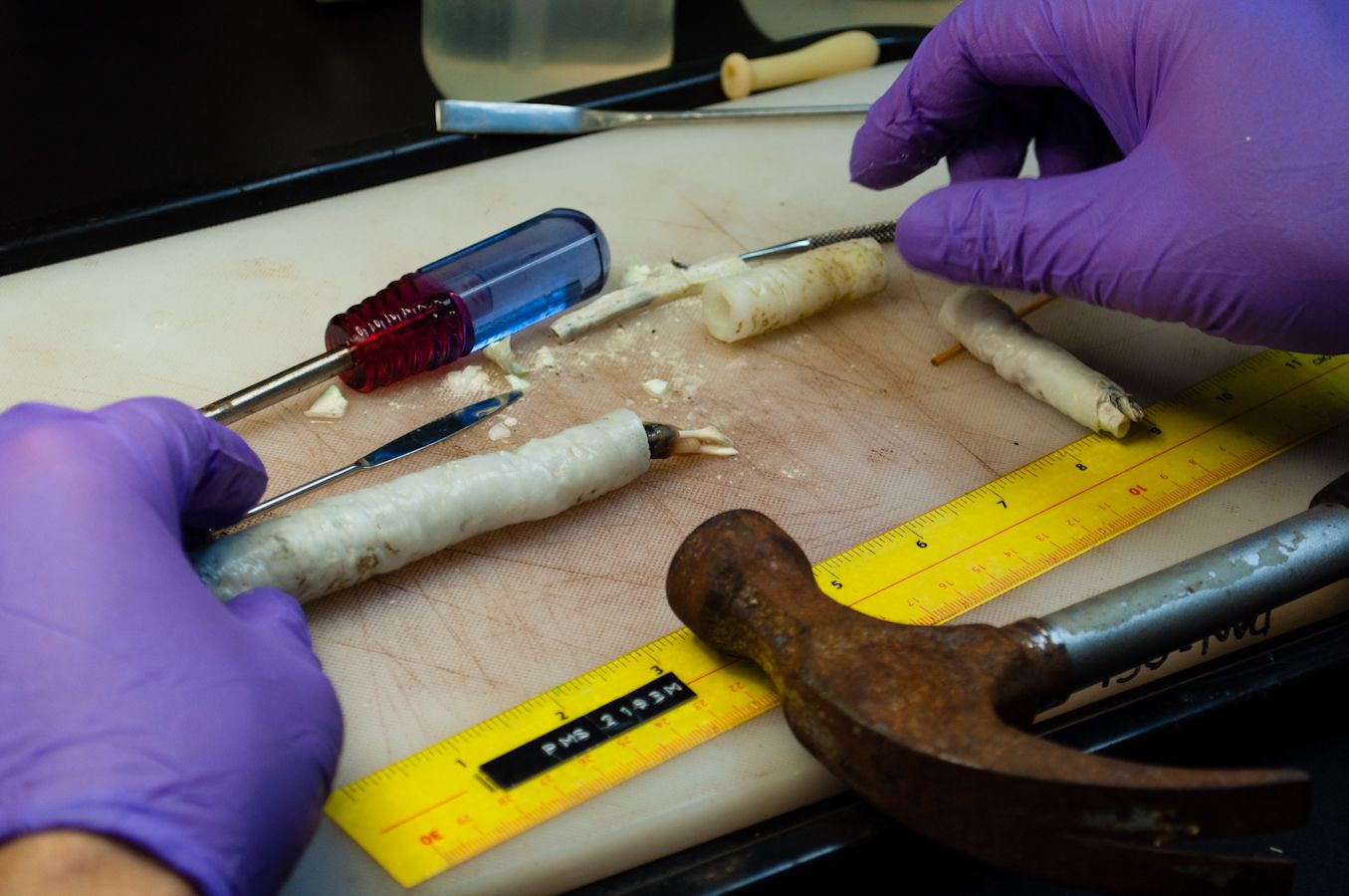- Reaction score
- 1,678
Although the giant shipworm was first categorized as a species more than 200 years ago, no living specimen had been examined by scientists and almost nothing had been known about it. That changed when Daniel Distel, a researcher at Northeastern University, and colleagues got their hands on a handful of the creatures during a research trip to the Philippines. Their analysis, in a study published April 17 in the journal Proceedings of the National Academy of Sciences, shows that these creatures are quite bizarre.
The giant shipworm, or Kuphus polythalamia, live inside large shells on the seafloor and grow to a length of more than five feet. That is much larger than other shipworms, which are generally diminutive. That, of course, led biologists to wonder why these creatures grow so big.
Other shipworms contain bacteria in their guts that break down cellulose, the stiff material of which plant cell walls are made. An investigation by the researchers, including Margo Haygood of the University of Utah College of Pharmacy, shows that Kuphus polythalamia don’t contain large amounts of these bacteria, nor do they have other shipworms’ hefty quantities of woody pulp in their guts. Rather, these giant weirdos contain a trove of unique bacteria that actually feast upon hydrogen sulfide. This gas, which to humans reeks of rotten eggs, is produced by festering wood and other rotting organic material in the seafloor. The unique adaption allows these huge animals to live in areas of the seafloor that would otherwise be uninhabitable, and it may also help explain their large size, allowing them to feed on a resource that moves to them, rather than having to move about nibbling wood.
These gut microbes convert hydrogen sulfide into sulfate, a process that provides energy for the species to live, Distel says. This is the same biological pathway used by animals like yeti crabs and giant mussels that live near ultra-hot hydrothermal vents that spew out hydrogen sulfide.
Many scientists believe that life evolved in hydrothermal vents in the sea—and may have survived by employing this same or similar biochemical process. The single-cell microbes then evolved into animals over the course of billions of years. Now, this research suggests that these shipworms evolved by harnessing the power of these sulfide-digesting bugs.
“It’s an example of [evolution] coming full circle,” Distel says.

 www.newsweek.com
www.newsweek.com
The giant shipworm, or Kuphus polythalamia, live inside large shells on the seafloor and grow to a length of more than five feet. That is much larger than other shipworms, which are generally diminutive. That, of course, led biologists to wonder why these creatures grow so big.
Other shipworms contain bacteria in their guts that break down cellulose, the stiff material of which plant cell walls are made. An investigation by the researchers, including Margo Haygood of the University of Utah College of Pharmacy, shows that Kuphus polythalamia don’t contain large amounts of these bacteria, nor do they have other shipworms’ hefty quantities of woody pulp in their guts. Rather, these giant weirdos contain a trove of unique bacteria that actually feast upon hydrogen sulfide. This gas, which to humans reeks of rotten eggs, is produced by festering wood and other rotting organic material in the seafloor. The unique adaption allows these huge animals to live in areas of the seafloor that would otherwise be uninhabitable, and it may also help explain their large size, allowing them to feed on a resource that moves to them, rather than having to move about nibbling wood.
These gut microbes convert hydrogen sulfide into sulfate, a process that provides energy for the species to live, Distel says. This is the same biological pathway used by animals like yeti crabs and giant mussels that live near ultra-hot hydrothermal vents that spew out hydrogen sulfide.
Many scientists believe that life evolved in hydrothermal vents in the sea—and may have survived by employing this same or similar biochemical process. The single-cell microbes then evolved into animals over the course of billions of years. Now, this research suggests that these shipworms evolved by harnessing the power of these sulfide-digesting bugs.
“It’s an example of [evolution] coming full circle,” Distel says.

Bizarre Marine Shipworm Feeds on Noxious Gas
The animal employs bacteria that convert noxious gas into food.
Last edited by a moderator:



